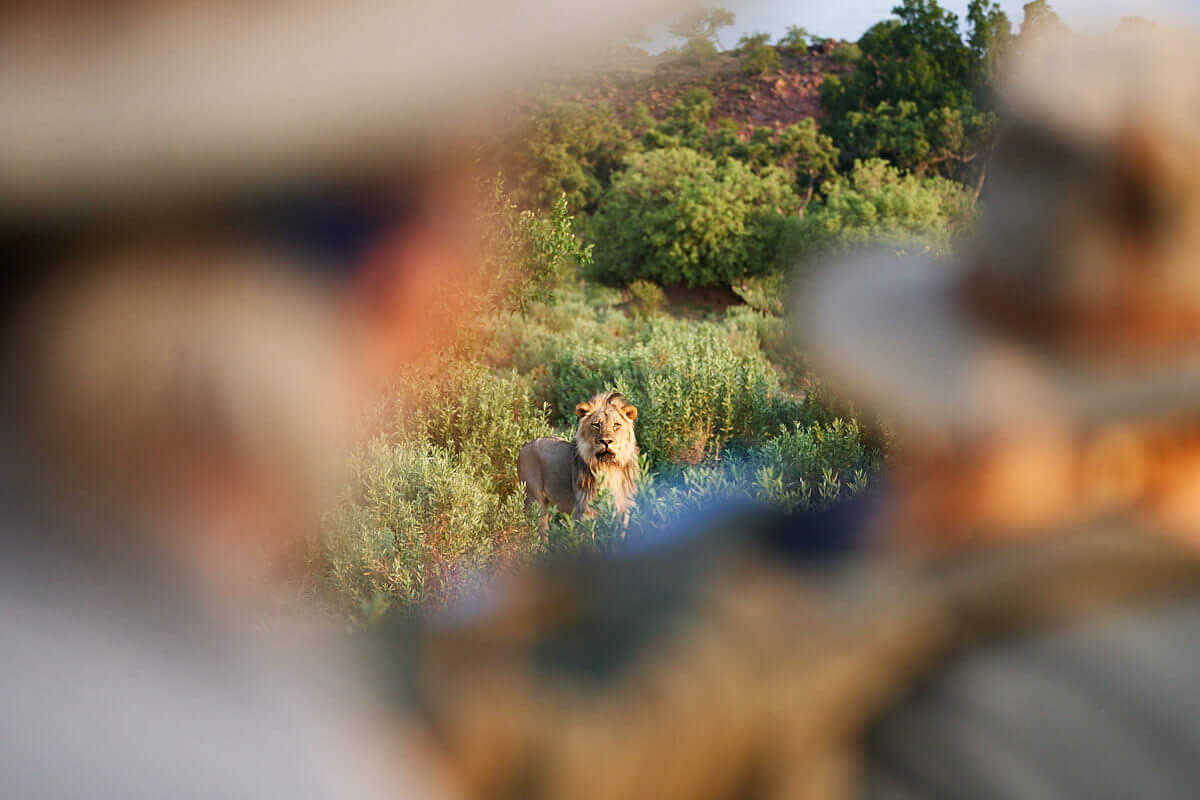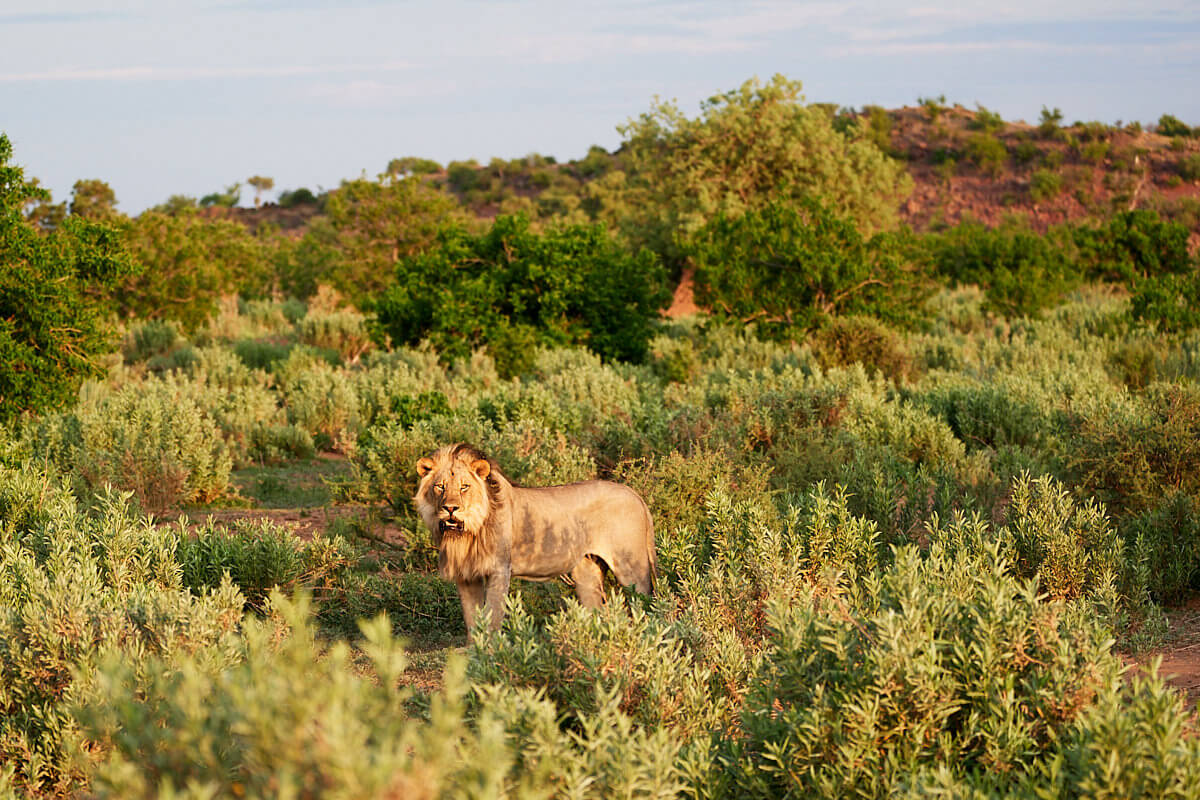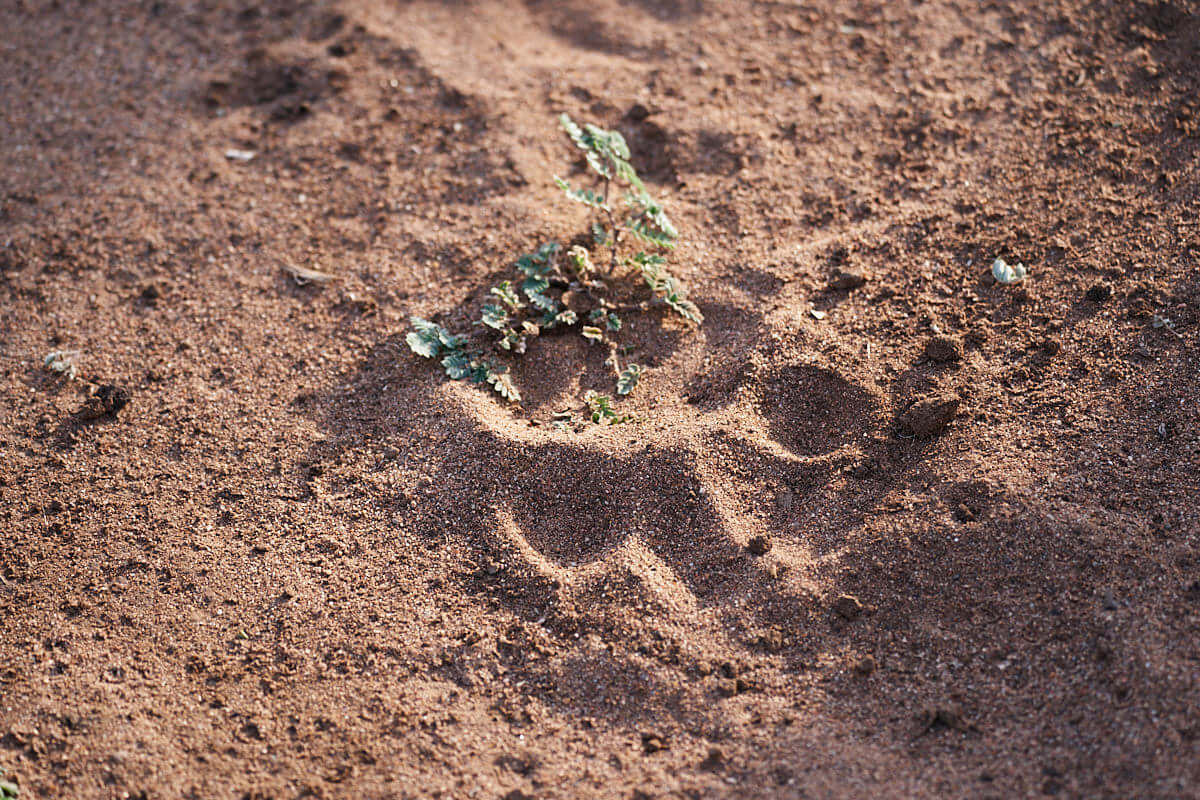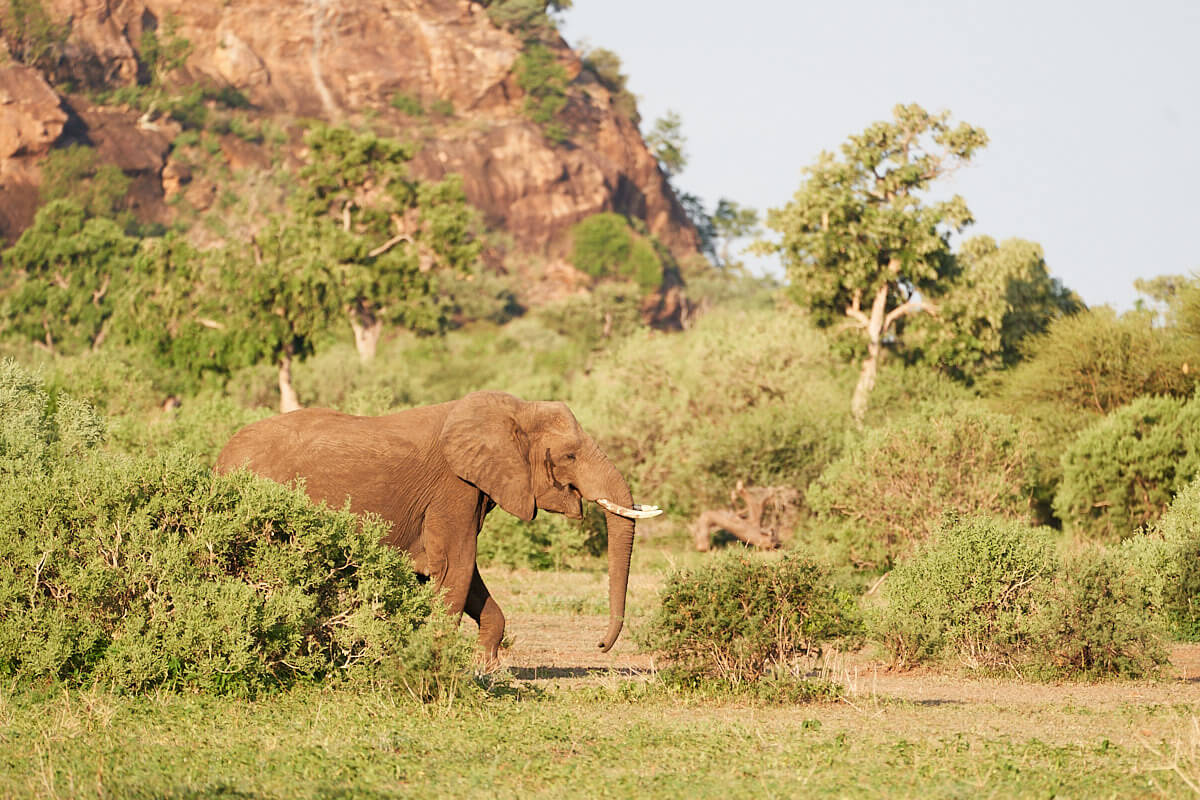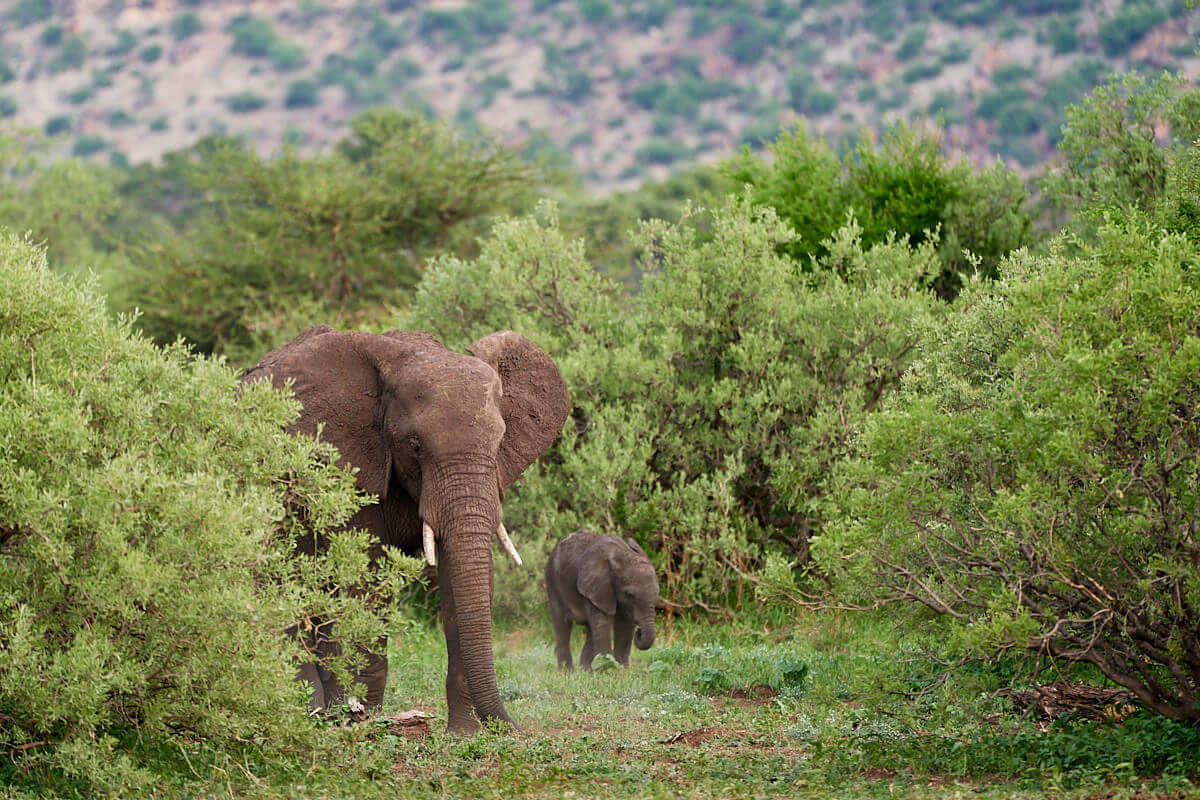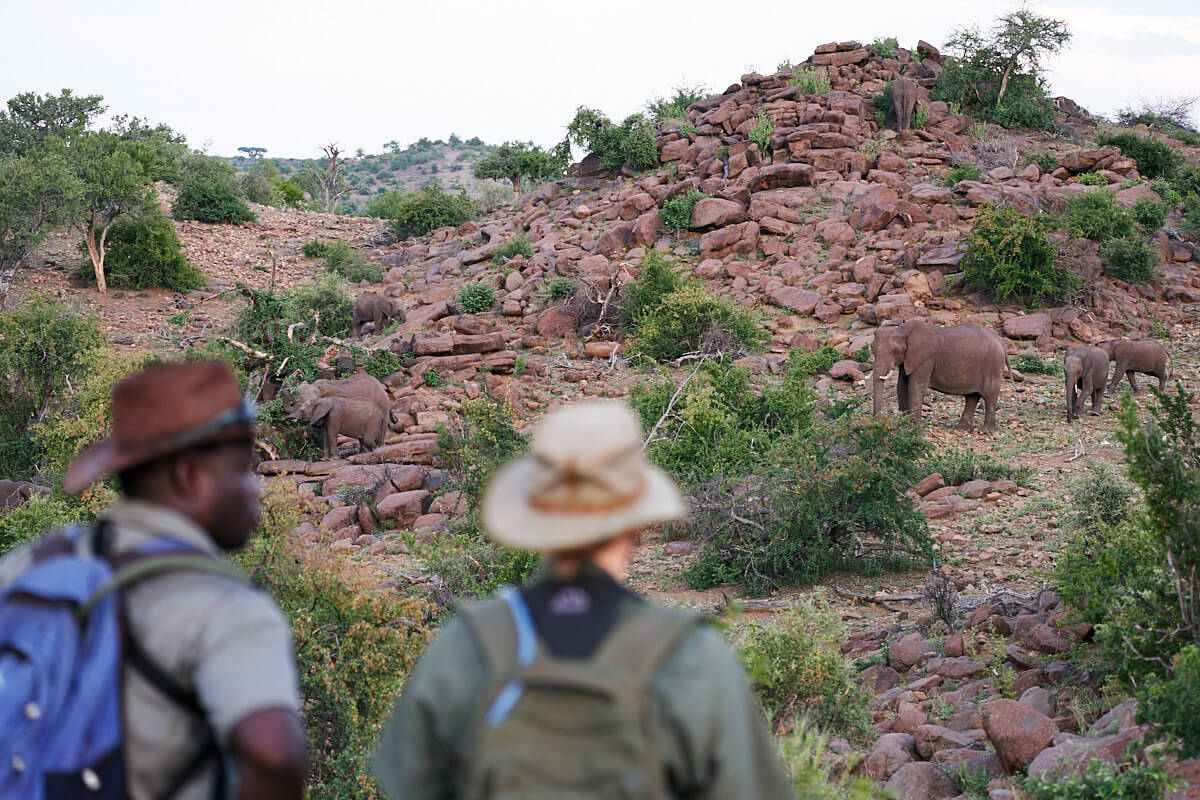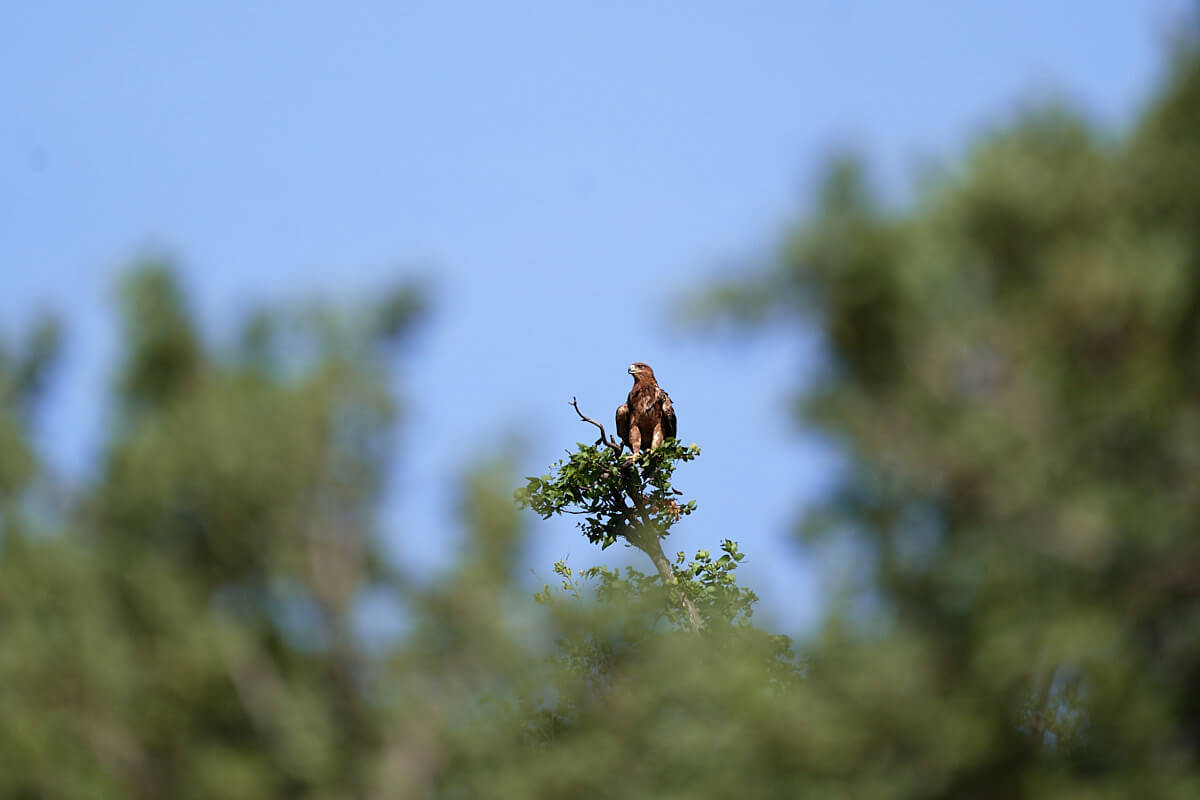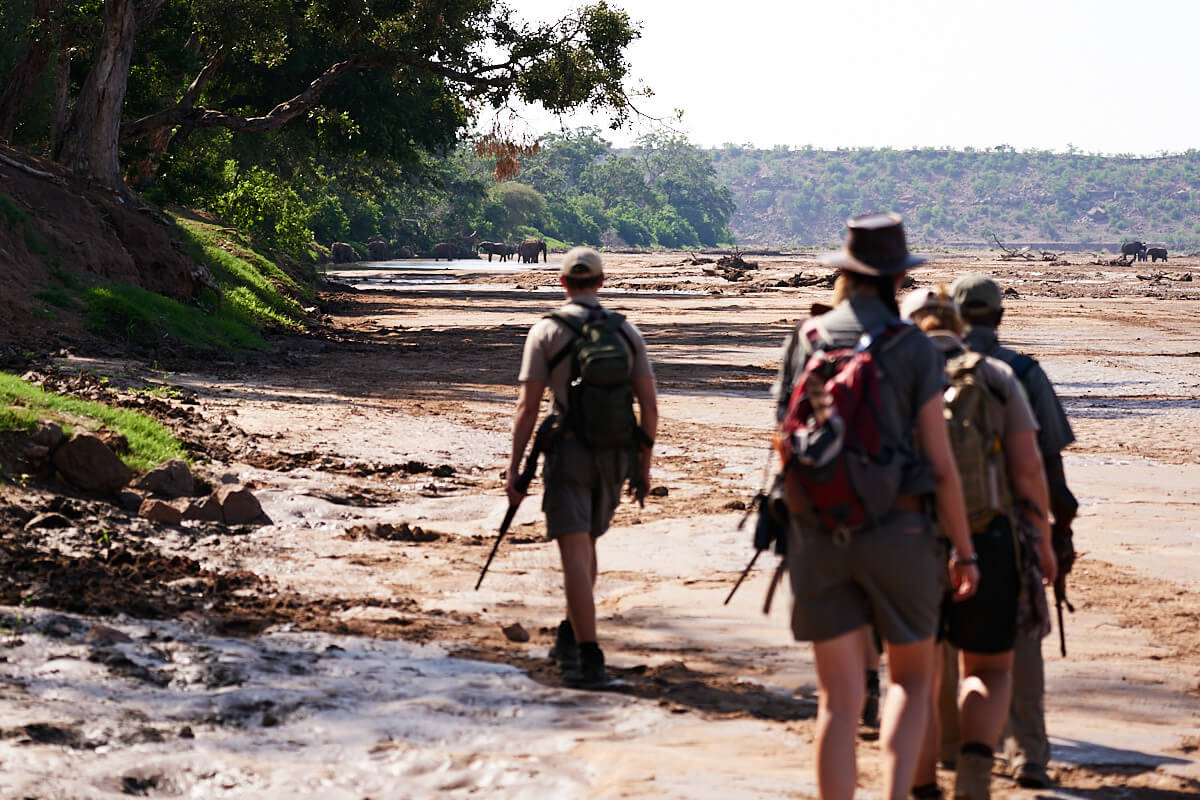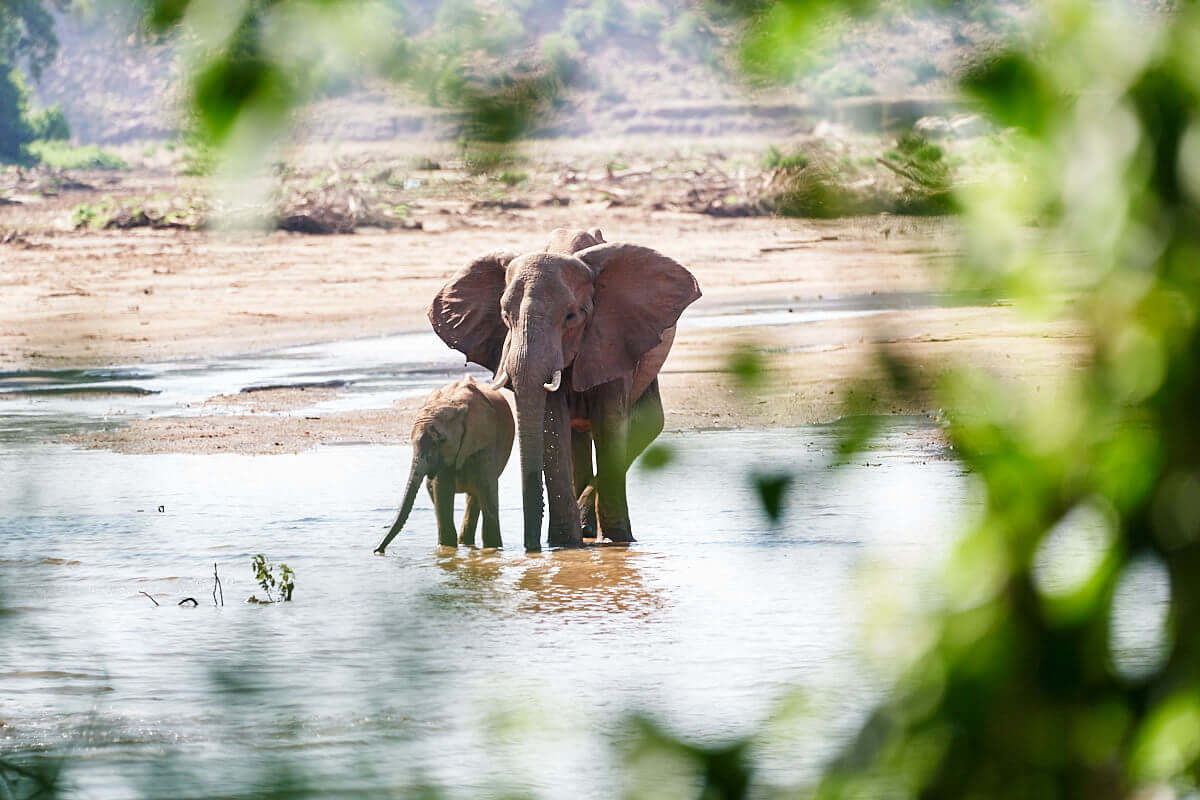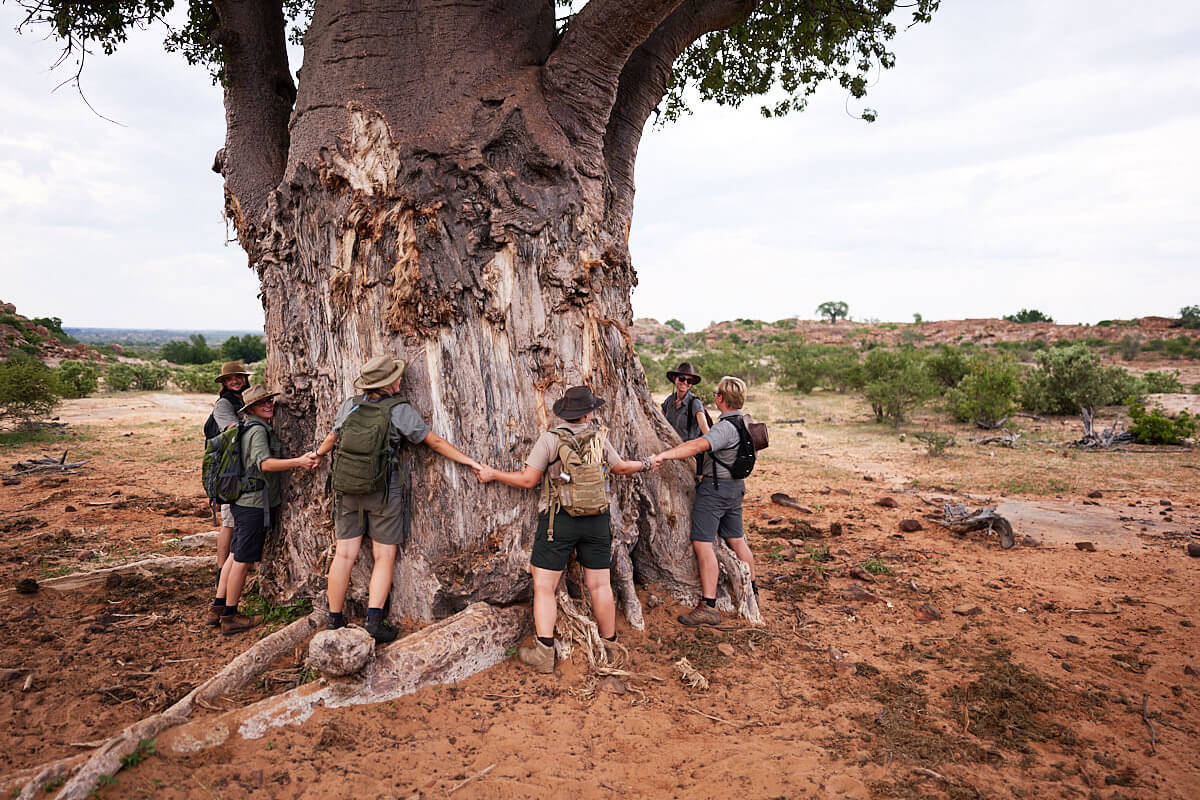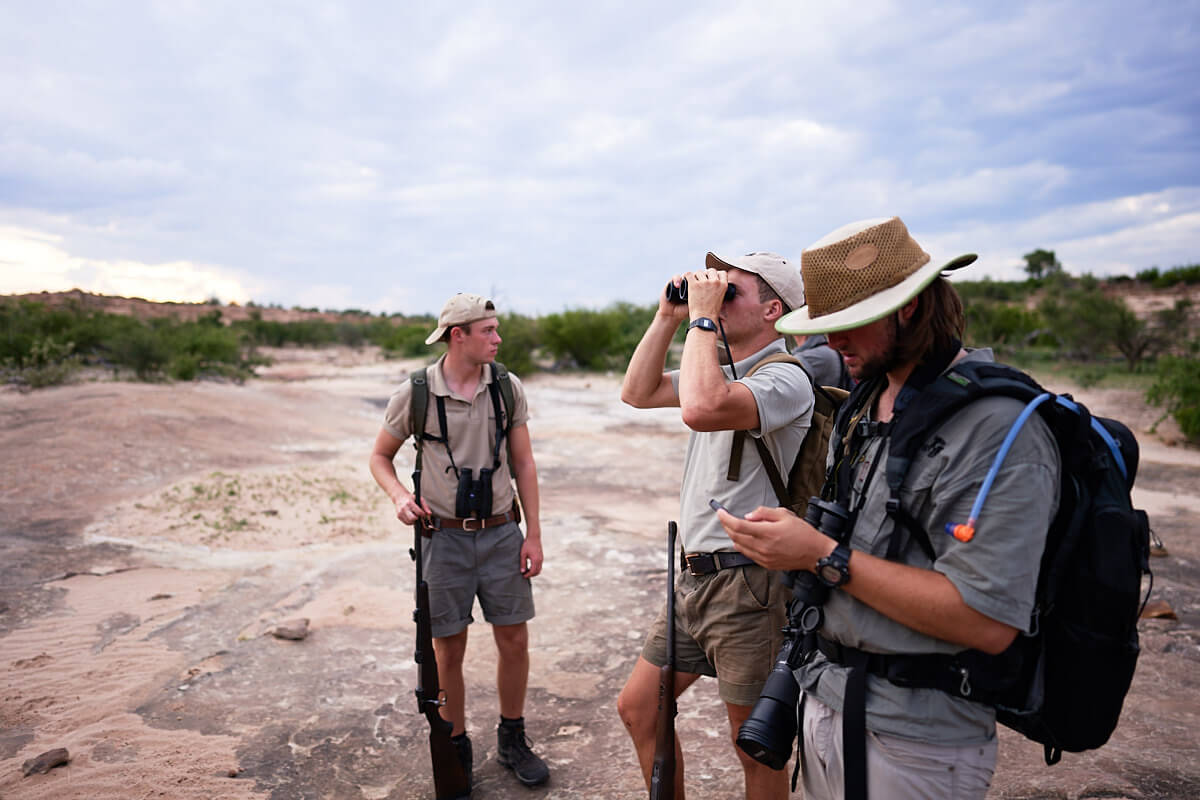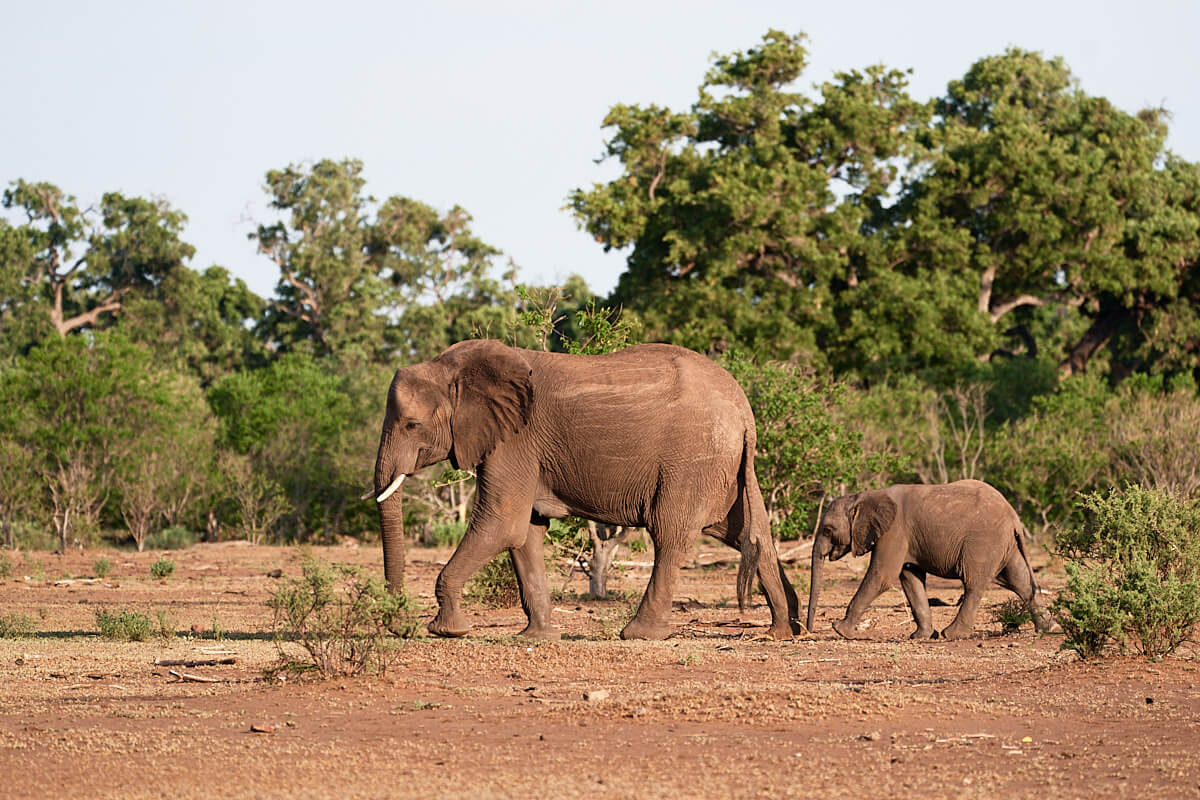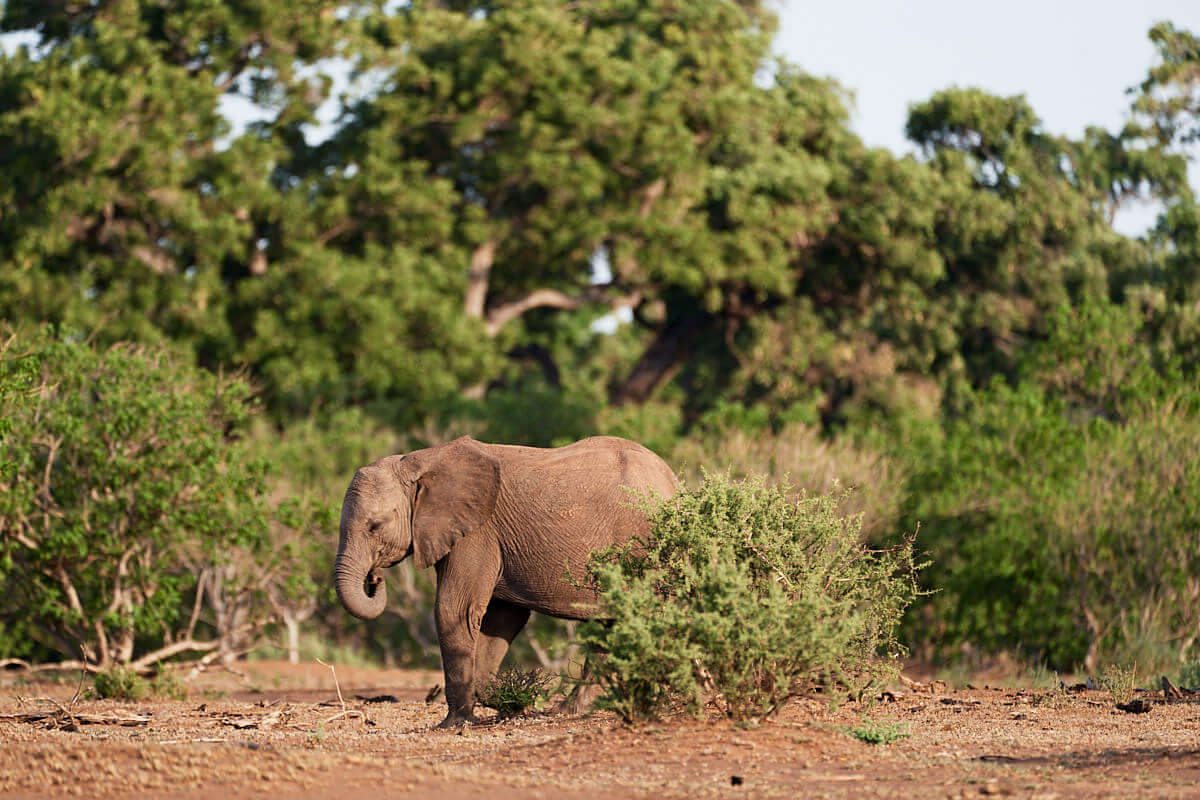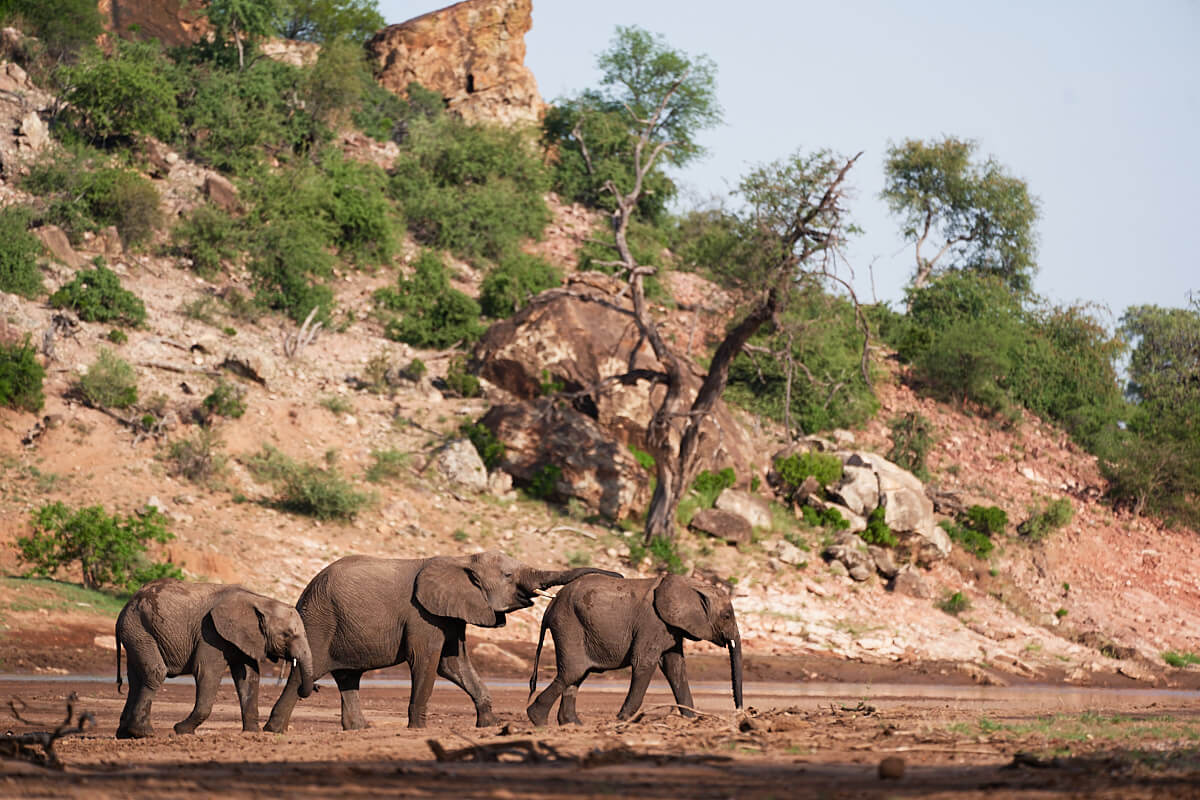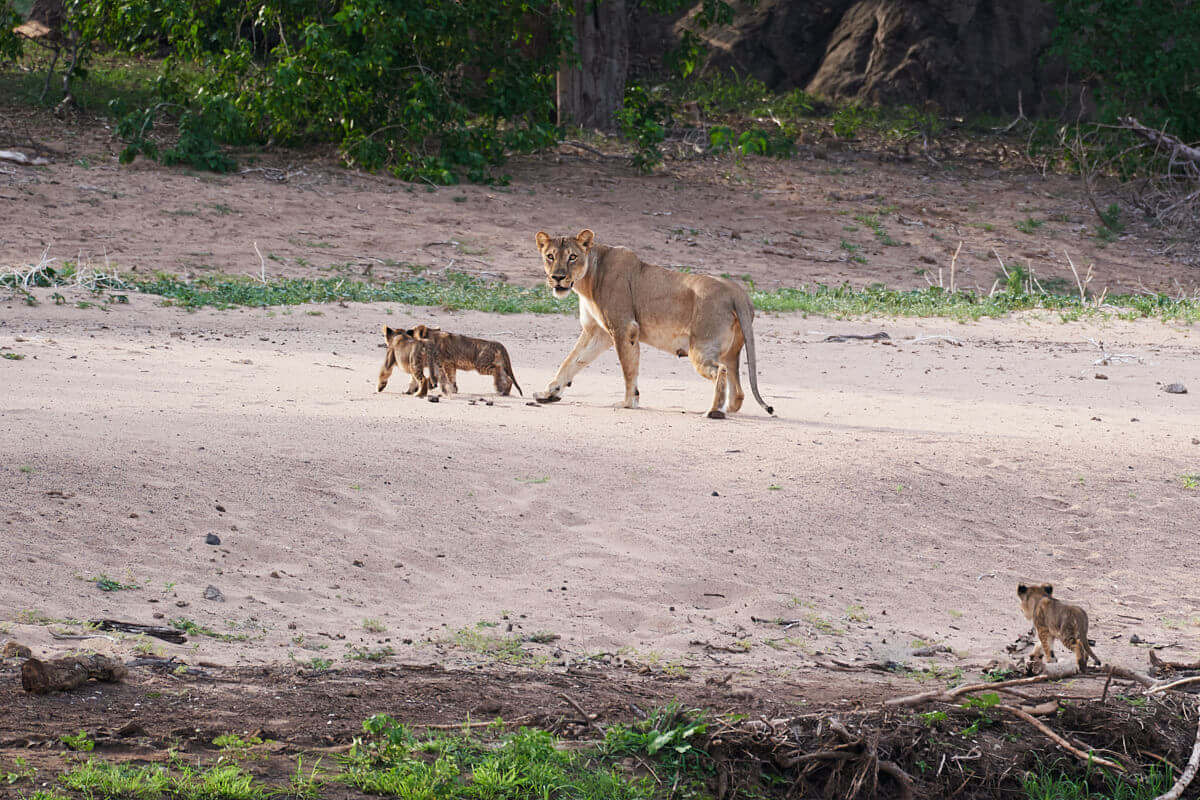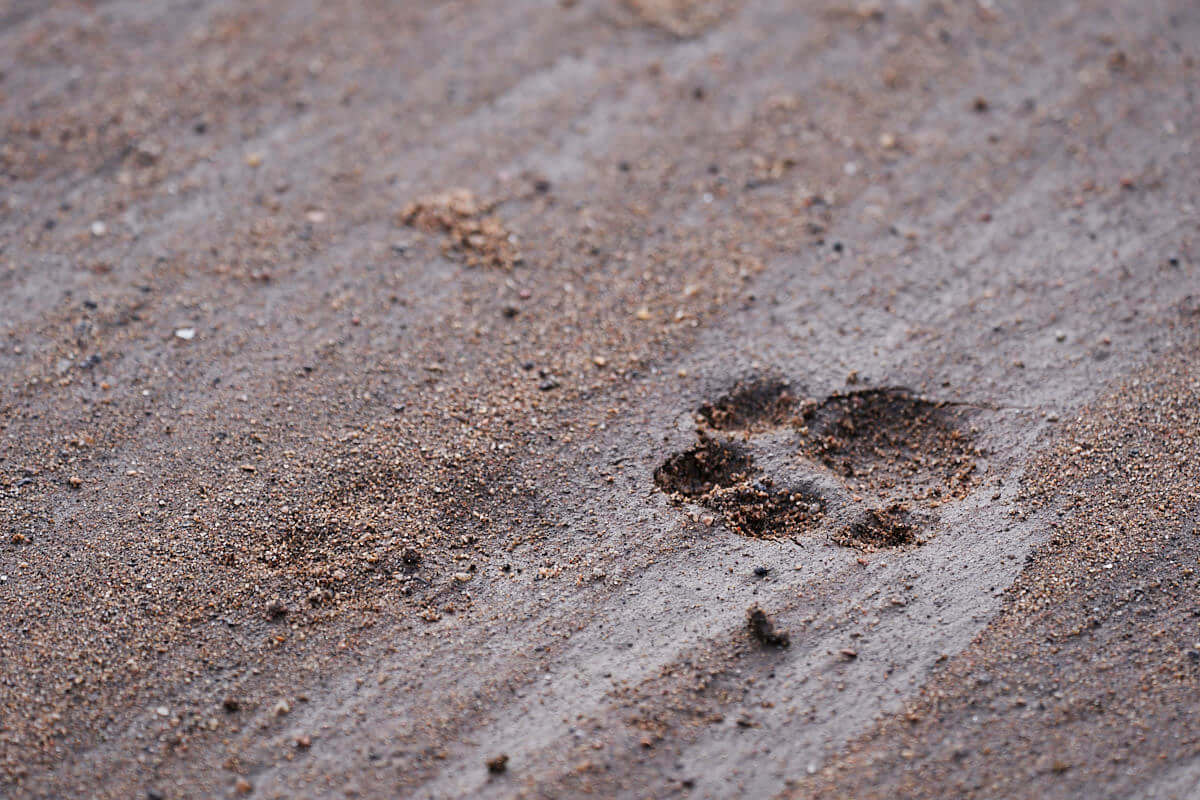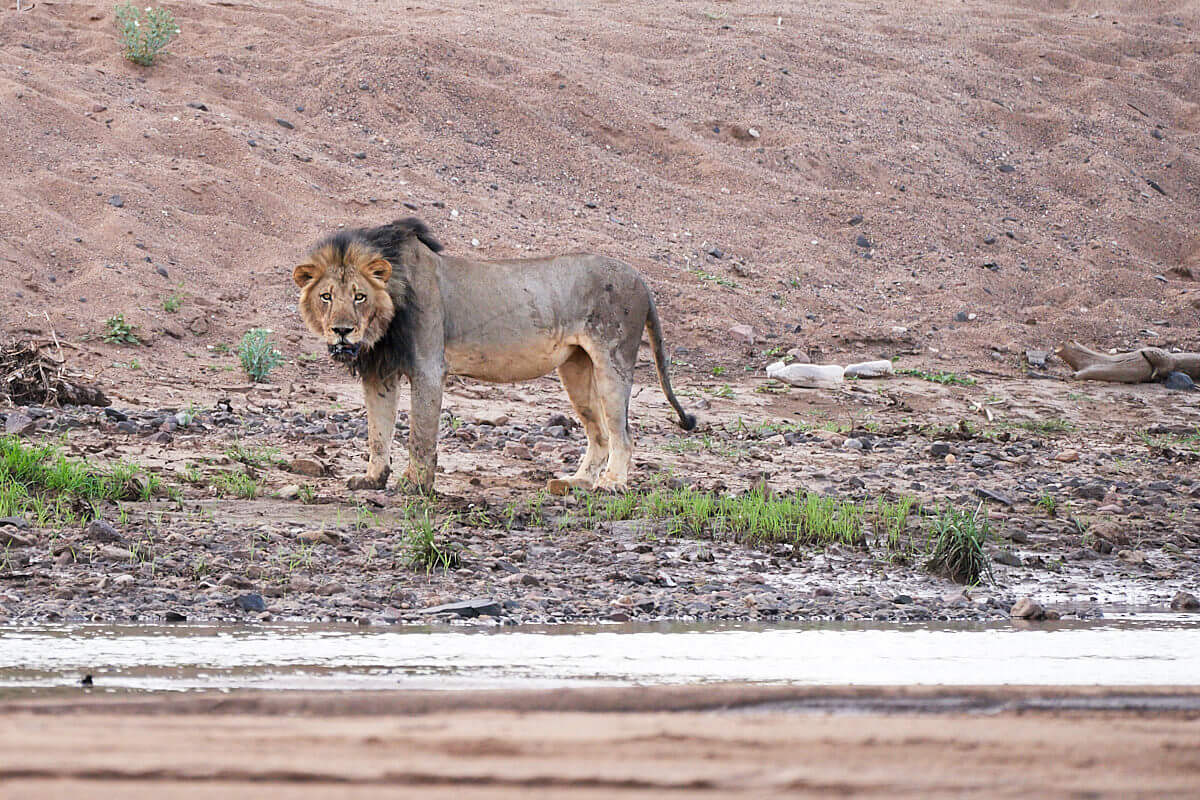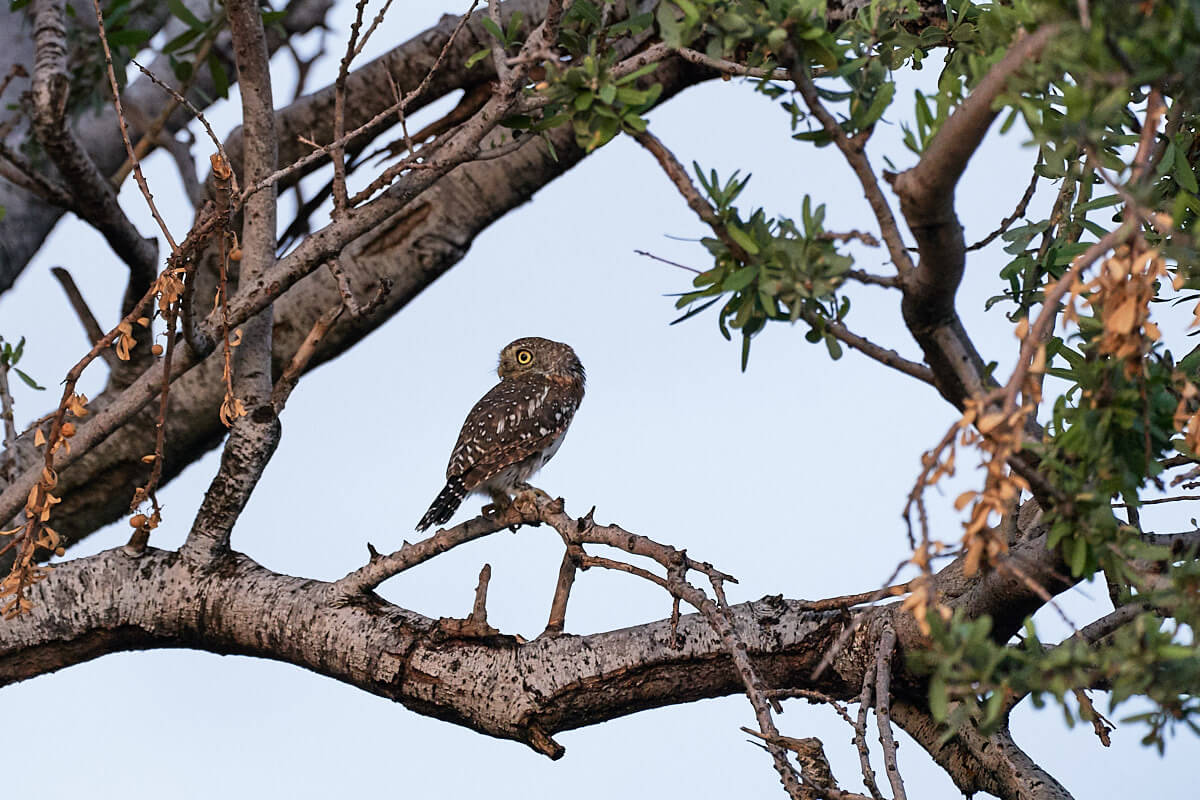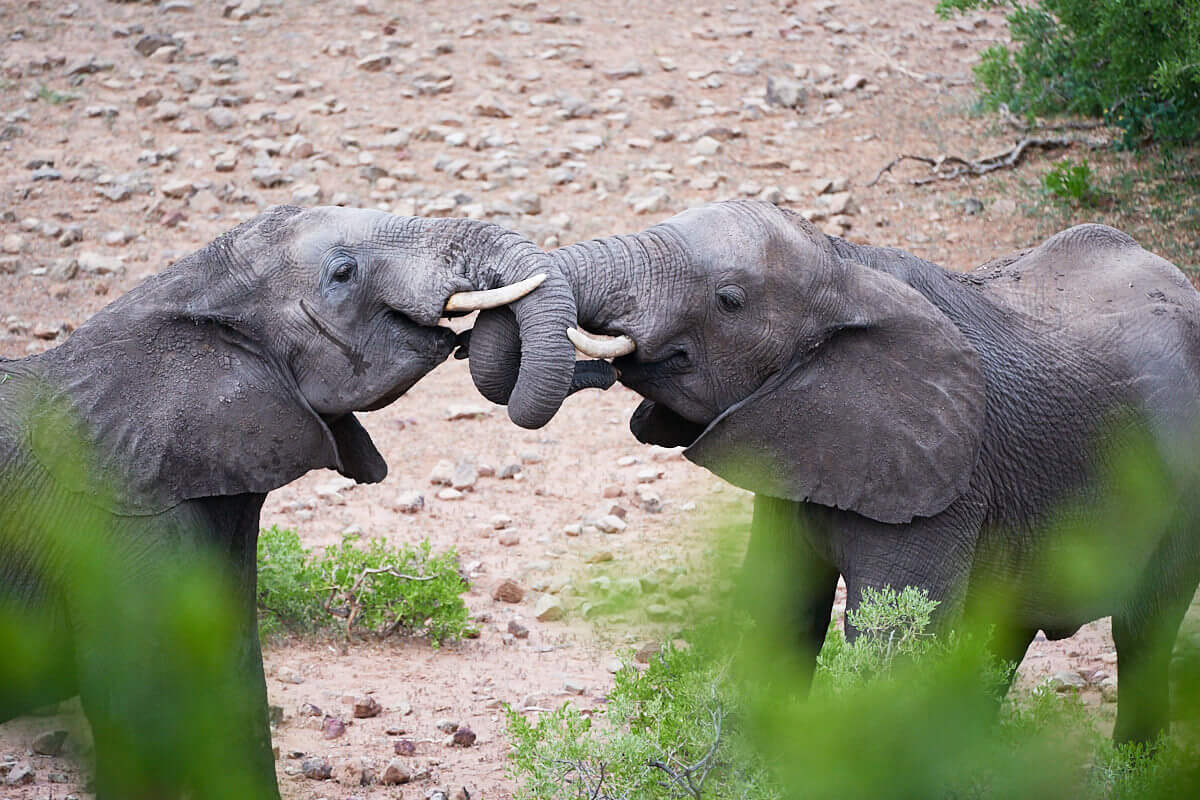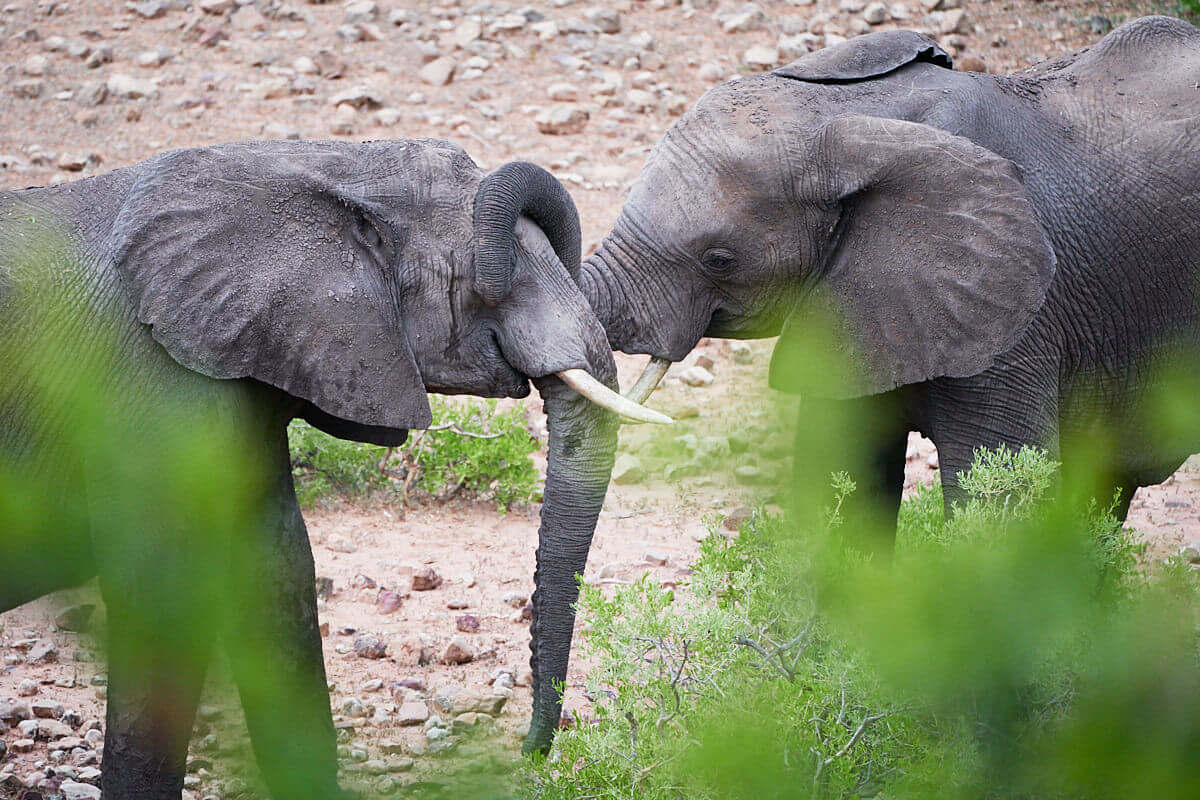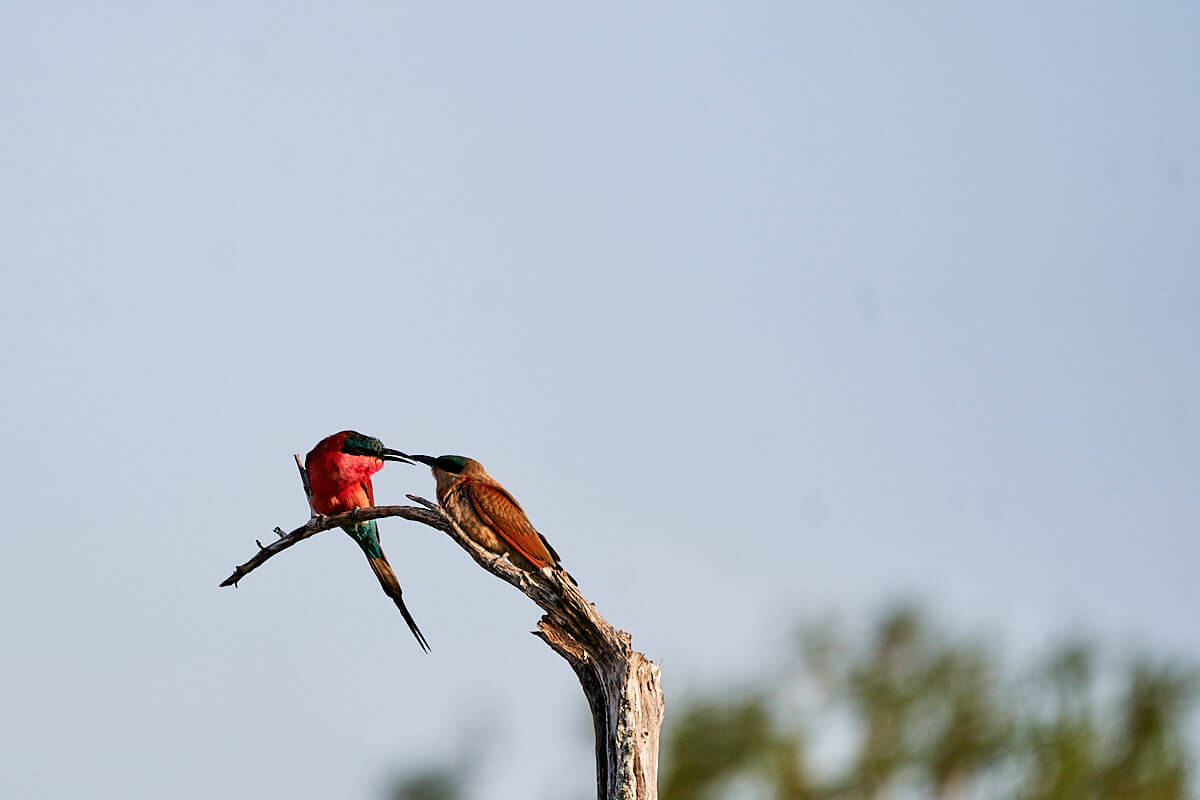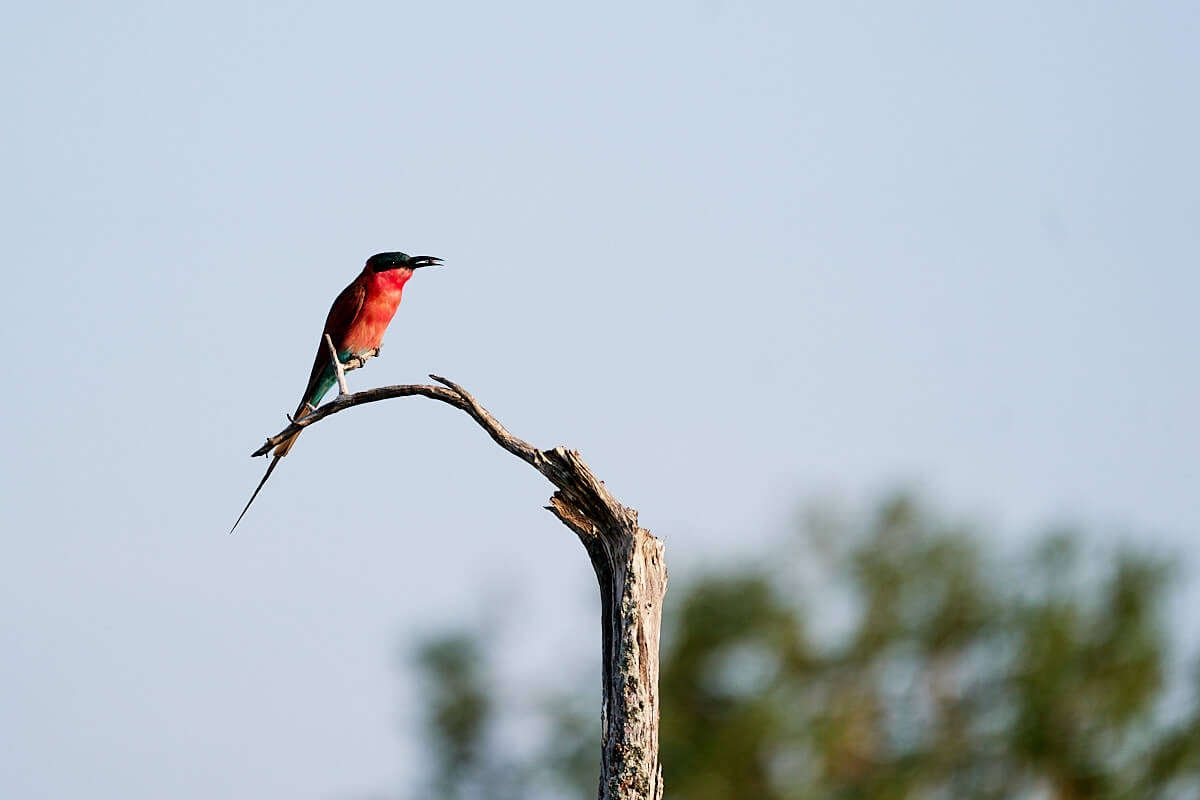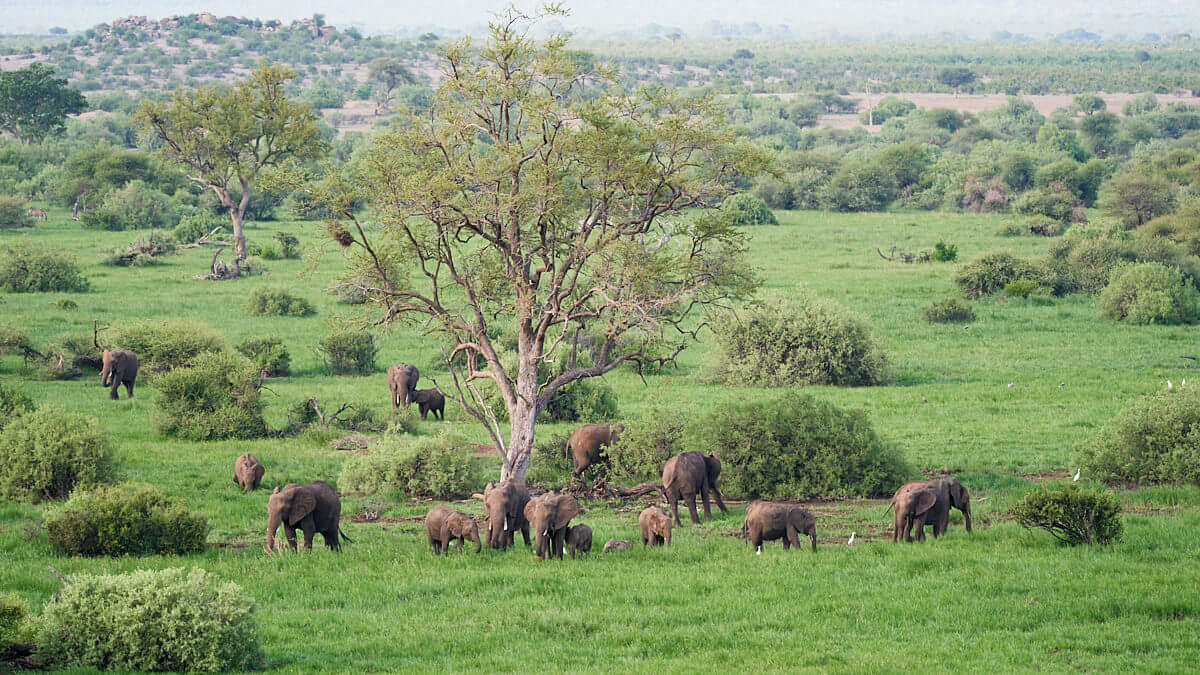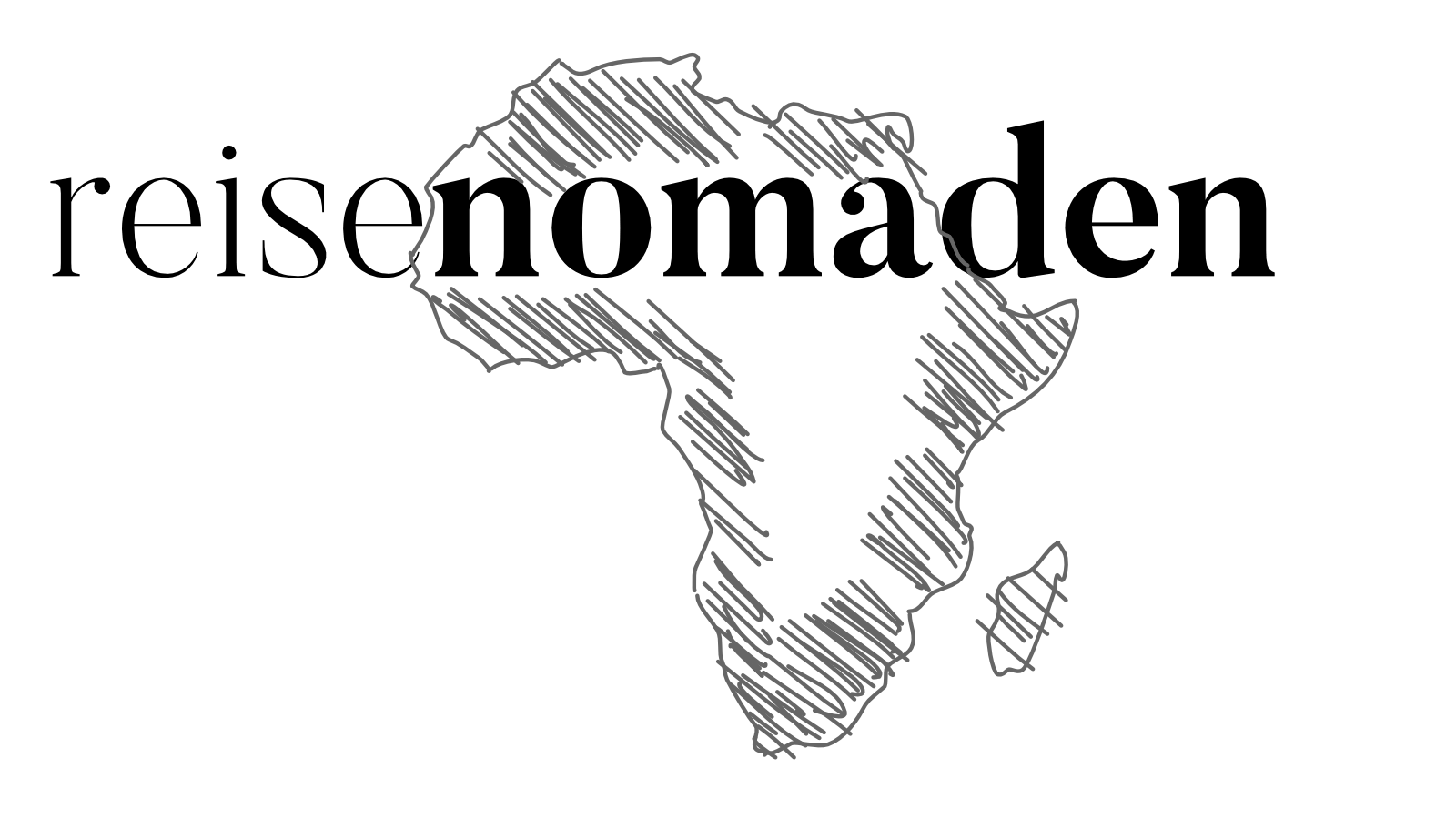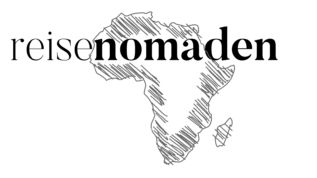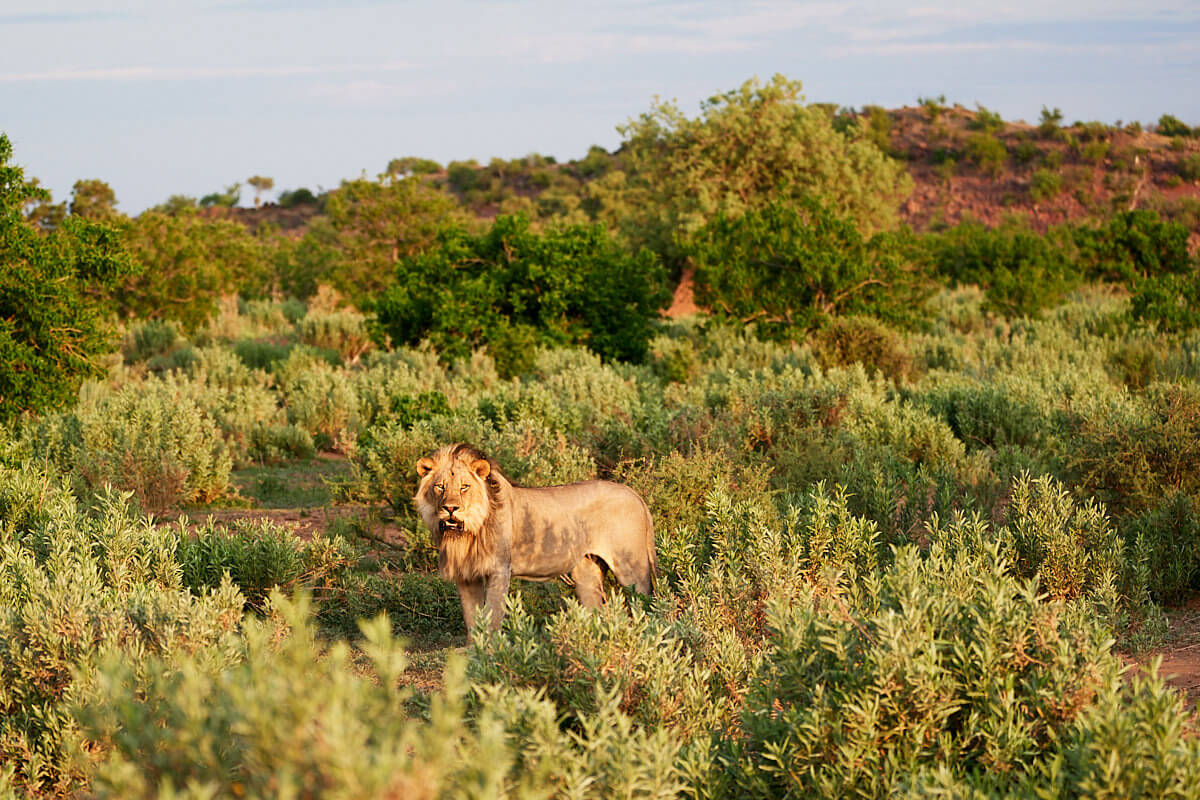Africa on foot – our Trails Guide course begins
The EcoTraining ‘Trails Guide course’ was already one of the highlights of our trip during the preparations. To explore the bush on foot twice a day for 28 days promised exciting encounters and a lot of learning content.
Being on foot in the bush is a completely different feeling than doing it by car. You become part of the scenery, you are completely vulnerable and everything is intensified. You see differently, you smell differently, and you feel differently.
We booked the course to learn more about the behavior of (dangerous) game and to be able to better assess moods. In addition, we would like to know how to behave ‘correctly’ in case of an unforeseen encounter.
The Camp
The camp that EcoTraining maintains in Botswana for the Trails Guide course is located in the Tuli Block, near the Limpopo River, on the border with South Africa. About 50 km away from Central Mashatu, the area is located in the fringe of the Mashatu Game Reserve.
The area is called Land of the Giants because there are more than fifty baobab trees. Besides plains, the region offers a considerable number of hills or rocky ridges. Wetlands alternate with small forests. The area is varied and provides a habitat for three of the ‘Big five#: elephants, lions and leopards.
18 participants from Europe and Africa
The other participants in our group of 18(!) already knew each other and had been traveling together for several months. They had previously completed the field guide training (Level 1) at the camps in South Africa. It was supplemented by various courses such as tracking (reading tracks), birding (ornithology), navigation, rifle handling (handling the rifle), etc.
More than 80% of the 16 other participants were from Europe. The rest came from South Africa, Mauritius and Zimbabwe. Most of the participants are in their early to mid-twenties and want to take some time off with an adventure between school and university or between Bachelor and Master.
Most of the Africans would like to work in the guiding industry. For the vast majority of Europeans it is more about a personal experience. Especially in South Africa it is extremely difficult to get a work permit as a foreigner, which does not do getting a job any easier.
We were lucky in our arrival because the bush camp of EcoTraining is located directly at the Motloutse River and can be reached from two sides. The faster way leads you through a farm. You have to cross the riverbed. Our GPS chose this way – and we crossed the riverbed without any problems because the river had very little water.
Due to our arrival, we were at camp about two hours before the other participants arrived. The day of arrival serves for orientation, ‘arriving’ and the discussion of procedures. On the 9th of January our adventure could start. Two bush walks are planned for each day. The first starts at 05:30 a.m. (wake-up call is at 04:30 a.m.) and lasts between 4 and 5 hours and the second starts at 04:00 p.m. and lasts about 3 hours.
A roaring surprise at the beginning
The start had it all. We had only gone about 100 meters on our first walk when Lazarus, our Instructor, was about to explain that it is important to also use slight elevations to scan the area when he suddenly shouted “Lion”. It took a while until we all realized that this was not a joke., Appx. 25 meters in front of us, hiding behind a small bush, there was a male lion looking at us.
This was blondy, part of a coalition of brothers who had driven the dominant male out of the area last summer and taken over the pride. Blondy does not respond to humans very well. He was the victim of a snare set by poachers. He had to be anesthetized and released under anesthesia. Furthermore, he has permanent damage to one hind leg and drags one foot a bit, but he is not impaired in running and hunting.
Now this lion stood in front of us and when it was clear to him that we had discovered him, he came out of his cover and showed himself in his full size. We all squatted on the small termite mound and 18 excited eyes stared at him. Stand your ground is the most important rule in the bush. Never run away, no matter what. Blondy fixed us and came closer.
When he was about 12 – 15 meters away from us, he stopped. His tail movements signaled that he was thinking about attacking us. Twice his tail moved quickly from left to right – as we know it from our house cats – while he was fixing us. Fortunately, he stopped, looked at us for a while, and then decided to move off to the side. He marked the territory, and then disappeared behind the bushes.
What an experience
What was that? Did that really happen? That was unbelievable – what a prelude. Blondy is much more problematic than his brother (who had no bad experience and is totally relaxed, as we were to learn a few days later) and our group size of nine participants plus two guides was certainly no disadvantage in this encounter.
During the first few days we all settled in and got used to the daily rhythm. We walked between 7.5-8 hours per day in the bush and had regular encounters with elephants and/or lions. This was absolutely extraordinary and we were really lucky. One of our instructors told us that more often he did not experience a single sighting – related to dangerous animals – with the groups for several weeks.
The first week passed like in a frenzy. In the mornings we got up at 4:00 a.m. at the latest, looking forward to the upcoming encounters with African wildlife.
Another lion encounter
We met Blondy’s brother, together with two lionesses and three cubs in the riverbed. While the mother of the cubs reacted restless and irritated to our presence, the male lion was relaxed and did not pay attention to us at all. When the two lionesses and the cubs disappeared in the bush, we slowly approached him up to appx. 30 meters. He stood up briefly, looked at us, turned around and lay down again. To meet lions on foot is fascinating!
When you sit under a tree in the shade and watch a herd of elephants feeding it is incredible. Especially when the elephants are about 20-50 meters away from you and have no knowledge that you are there.
We learned an extreme amount, especially in the first week. Stalking considering the wind, the position of the sun and the use of natural cover. Thinking about escape routes for humans and animals and retreat routes is highly exciting and involves much more than you would guess if you ever had the pleasure of participating in a bush walk at a lodge.
Confrontations and Zones
The encounter with Blondy was a ‘confrontation’ and is to be avoided at all if possible. Confrontations mean stress for all that are involved, but they just can’t always be avoided. In Blondy’s case, he made the decision to approach us, and he had already fallen below our comfort zone, which he was aware of.
Also, the topic of distances and distinctions into four different zones (critical-, warning-, alert- and comfort zone) is highly exciting and detailed knowledge about it helps to let encounters proceed peacefully. The vast majority of serious incidents happen because guides cross boundaries to provide special experiences for their guests or because walking groups and wildlife meet abruptly and have not seen/heard or smelled each other before.
To be continued…
